- Home
- Norman Mailer
The Spooky Art: Thoughts on Writing Page 22
The Spooky Art: Thoughts on Writing Read online
Page 22
Nonetheless, it is still reminiscent of orgy to have relations with two worlds of sentience at once, and when fresh, theatre is orgy. On stage, the actor is in communion with the audience and up to his neck in relations with other actors (if they are all still working together). A world of technique supports them. There are ways and means to live and act with half-thought-out lines of dialogue and errors of placement by the director, ways to deal with sentiments which have no ring and situations one knows by heart and still must enter with a pretense of theatrical surprise. An actor’s culture exists, after all, for the working up of the false into the all-but-true; actors know the audience will carry the all-but-true over into the real and emotionally stirring if given a chance. So actors develop a full organ of emotional manifests. Large vibrant voices, significant moves. It all works because the actor is literally alive on a stage and therefore can never be false altogether. His presence is the real truth: He is at once the royal center of all eyes, and a Christian up before lions. So his theatrical emotion (which bears the same relation to real emotion that veneer of walnut bears to walnut) is moved by the risk of his position into a technique which offers truth. A skillful actor with false gestures and false emotions elicits our admiration because he tries to establish a vault under which we can seize on the truth since, after all, he has told the lie so well. Why, then, must that be an emotional transaction light-years of the psyche away from the same transaction carried over to film?
It is because the risk in film is of other varieties. No audience is present other than the director, the script girl, the producer, the cameramen and the union grips. And that is a specific audience with the prejudices and tastes of policemen. Indeed the grips usually dress like cops off duty and are built like cops (with the same heavy meat in the shoulders, same bellies oiled on beer), which is not surprising, for they are also in surveillance upon a criminal activity: People are forging emotions under bright lights.
But it is no longer false emotion brought by technique to a point where it can be breathed upon and given life by audiences who do not know the next line. No, now the crew is a set of skills and intelligences. They are as sophisticated to the lines of the scene as the actors themselves. Like cops they see through every fake move and hardly care. The camera must move on cue, ditto the sound boom, lights are to be shifted and the walls slid apart—the action is easily as complex as a professional football team running through the intricacies of a new play or preparing a defense against it.
In fact, the actor does not usually address himself to the technicians. It is the director whose intelligence he will feel first, a charged critical intelligence knowing more of the scene than himself, a center of authority altogether different from a theatrical audience’s authority (which is ready to relax with every good sound the actor makes). The movie director, however, does not relax then. The good sound of the actor can turn the plot inside out. No, here, the actor must work into a focus of will. The real face he speaks to, whether a step or ten steps to the side of the director, is a circle of glass as empty of love as an empty glass. That lens is his final audience. It takes precedence over the director and even over the actors he plays with. In the moment of his profoundest passion, as he reaches forward to kiss the heroine with every tenderness, his lips to be famous for their quiver, he is of course slowly and proficiently bringing his mouth up to the erogenous zone of the lens.
On stage, an actor, after twenty years of apprenticeship, can learn to reach the depths of an audience at the moment he is employing the maximum of his technique. A film actor with equivalent technique will have developed superb skills for revealing his reaction to the circle of glass. He can fail every other way, disobey the director or appear incapable of reacting to his direction, leave the other actors isolated from him and with nothing to react to, he can even get his lines wrong, but if he has film technique he will look sensational in the rushes, he will bring life to the scene even if he was death on the set. It is not surprising. There is something sinister about film. Film is a phenomenon whose resemblance to death has been ignored for too long. An emotion produced from the churn of the flesh is delivered to a machine, and that machine and its connections manage to produce a flow of images which will arouse some related sentiment in those who watch. The living emotion has passed through a burial ground—and has been resurrected. The living emotion survives as a psychological reality; it continues to exist as a set of images in one’s memory which are not too different, as the years go by, from the images we keep of a relative who is dead. Think of a favorite uncle who is gone. Does the apparatus of the mind which flashes his picture before us act in another fashion if we ask for a flash of Humphrey Bogart next? Perhaps it does not. Film seems part of the mechanism of memory, or at the least, a most peculiar annex to memory. For in film we remember events as if they had taken place and we were there. But we were not. The psyche has taken into itself a whole country of fantasy and made it psychologically real, made it a part of memory. We are obviously dealing with a phenomenon whose roots are less defined than the power and glory of king and church. Yes, movies are more mysterious than theatre; even a clue to the undefinable attraction of the movie star is that he remains a point of light in that measureless dark of memory where other scenes have given up their light. He has obviously become a center of meaning to millions, possessed of more meaning than the actor next to him who may be actually more attractive, more interesting—definition of the phenomenon frays as we try to touch it. But has the heart of the discussion been sounded? Does it suggest that movie stars partake of the mysterious psychic properties of film more than other actors? that something in them lends itself to the need of memory for images of the past one can refer to when the mind has need to comprehend something new before it? We have to be careful. It is perhaps not so simple as that. The movie star may also suggest obsession, that negative condition of memory, that painful place to which we return over and over because a fundamental question is still unresolved: Something happened to us years ago which was important, yet we hardly know if an angel kissed us then or a witch, whether we were brave or timid. We return to the ambiguity with pain. The obsession hurts because we cannot resolve it and so are losing confidence in our ability to estimate the present.
Obsession is a wasteful fix. Memory, when it can be free of obsession, is a storehouse to offer up essences of the past capable of digesting most of the problems of the present; memory is even the libido of the ego, sweetening harsh demands of the will when memory is, yes, good. But the movie star seems to serve some double function: The star feeds memory and obsession—one need only think back to one’s feelings about Marilyn Monroe! The movie star is welcoming but mysterious, unavailable yet intimate, the movie star is the embodiment of a love which could leave us abject, yet we believe we are the only soul the movie star can love. Quintessence of the elusive nature of film, the movie star is like a guide to bring us through the adventures of a half-conscious dream. It is even possible the movie star gives focus to themes of the imagination so large, romantic, and daring that they might never encounter reality: How can an adolescent have any real idea whether he will ever have sex with a beautiful woman or fight for his life? Events so grand need years of psychic preparation. It is therefore possible that the dream life of the film exists not only to provide escape but to prepare the psyche for apocalyptic moments which most likely will never come.
Some differences of film from theatre may then have been noted. Theatre works on our ideas of social life and our understanding of manners. At its most generous theatre creates a communion of bodies and a savory of the emotions—it becomes a feast and a fuck. But film speaks to the lost islands of the mind. Film lives somewhere in that underground river of the psyche which travels from the domain of sex through the deeps of memory and the dream, on out into the possible montages of death—we need only think of any man who was rescued from drowning after he thought he was on the last trip down. Does he ever relate the experience without speaking of th
e sensation that his life became a film running backward? It is as if film has an existence within the brain which may be comparable to memory and the dream, be indeed as real as memory and the dream, be even to some degree as functional. It was as if the levels of that existential river which runs into ultimate psychic states would no longer read as perhaps once it did: sex—memory—dream—death; but now it flows through a technological age and so has to be described by way of sex—memory—film—dream—death. Theatre has to be in the world of manners, but film is in the physiology of the psyche. For that reason, perhaps, film comes nearest to a religion as the movie houses are empty; it speaks across all the lonely traverses of the mind; it is at its most beautiful in precisely those places it is least concrete, least theatrical, most otherworldly, most ghostly, most lingering unto death—then the true experience of the film as some Atlantis of the psyche will manifest itself, and directors like Antonioni and Bergman will show us that the film inhabits a secret place where the past tense of memory and the future intimations of the dream are interchangeable, are partners in the film: There is an unmistakable quality to any film which is not made as filmed theatre but rather appears as some existence we call film. That existence runs through Chaplin and Sunset Boulevard and Persona—it runs through home movies. It was Warhol’s talent to perceive that in every home movie there is a sense of Time trying to express itself as a new kind of creation, a palpability which breathes in the being of the film. The best of works and some of the worst of film works have this quality. One can even find it for flashes in cranky old battered films of the purest mediocrity late at night on TV, B-films without an instant of talent, yet the years have added magic to what was once moronic—Time is winking her eye as we look at the film. Time suddenly appears to us as a wit.
Of course, there are movies which have delivered huge pleasures to millions and never were film at all, just celluloid theatre convertible to cash. Some were good, some very good, some awful, but the majority of motion pictures, particularly the majority of expensive ones, have always labored against the umbilical antipathy of film for theatre. They were, no matter how good as filmed theatre, never equal to theatre at its best—rather, scaled-down repasts for the eye and ear. They had a kind of phlegmatic tempo and all-too-well-lit color which rarely hindered them from reaching lists for the Ten Best Pictures of the year. They were pictures like Oklahoma!, South Pacific, The Sound of Music, Mary Poppins, and The Best Years of Our Lives. They were even such critical favorites as Marty, Born Yesterday, Brief Encounter, and The Seven Year Itch, or Anne of the Thousand Days, add Lust for Life, All About Eve, Around the World in Eighty Days, West Side Story. All that celluloid was super-technique for audiences who had not necessarily ever seen a play but were constantly nourished in the great cafeteria of the American Aesthetic. To the owners of that cafeteria there was something obscene in the idea that one should not be able to translate a book into a play, film, or TV series. So, the categories remained apart, and the difference between the movies just named and films like Zabriskie Point, Belle de Jour, Limelight, Diabolique, 8½, The Bicycle Thief, The 400 Blows, High Noon, Easy Rider, and Weekend was as the difference between crud and sustenance for that needy if ghostly part of the psyche the film was supposed to enrich.
Very well. There was film and filmed theatre, there were relatively pure movies, and there were money-making motion pictures, which had almost nothing to do with movies or memory or dream but were filmed circus for the suckers who proceeded to enjoy them enormously, suckers who loved them for their binding glue, and the status of seeing them, and the easy massage such pictures gave to emotions real theatre might have satisfied more. These motion pictures, made for no motive more in focus than the desire for money, were derived from plays, or were written and directed as filmed plays, they composed three-quarters to nine-tenths of the motion pictures which were made, and they might yet be the terminal death of Hollywood, for they were color television on enormous screens and so failed more often than they succeeded.
Of course the best films were just as often watched in empty theatres. Such films provided experiences which were later as pure in recollection as splendid or tragic days in one’s life, they were not unlike the memory of some modest love which did not survive but was tender in retrospect for now it lived with the dignity of old love. Such films also changed as one remembered them, since they had become part of one’s psychological life. Like love, they partook a little of some miracle, they had emerged from the abominable limitations of the script, yes, they had emerged out of some mysterious but wholly agreeable lack of focus toward that script in the intent of the director and/or the actor, they were subtly attached to a creative mist, they had the ambiguity of film. For if filmed theatre could sometimes be effective, sometimes be even as perfect and deserving of admiration as Midnight Cowboy or On the Waterfront, such pictures still had their aesthetic fired by the simpler communication of the theatre, where relations between actors usually produced a dramatic outcome as capable of definition as the last line of a family fight. “Go to an analyst” turned out to be the message, or “Lover, we’ll get along,” or “God bless us, we’re unhappy, but we’ll stick for the kids.” If it is theatre so rich as The Little Foxes, it will say, “I am prepared to kill you, and I will.” Since the need of a stage actor is to draw an audience together, his instinct is to simplify the play and concentrate it, give it a single crisp flavor. So theatre speaks. Powerfully or with banality, comically or in the botch of hysteria, it speaks, secretly it almost always speaks vulgarly, for almost always it says, “We’re here to tell you something about life. We’ve got a piece of the meat for you.” Of course if it is bad theatre, conceived in advance as a television series or any other form of Cafeteria, then it is only there to tell you something about public opinion and how that works at the lowest common denominator. But good or bad, theatre functions at its simple best when every resonance of the evening can collect about a single point—that place where the actors seduced the audience to meet the play.
Film, however, is shown to audiences who do not often react together. Some laugh, while others are silent, some are bored. Few share the same time. They have come in on the movie at different places. For film always speaks of death. Theatre rouses desires between the living audience and the living actors; film stirs suicide pacts where each individual in the audience goes over the horizon alone with the star; film speaks of the ambiguity of death—is it nothingness we go to, or eternal life? Is it to peace we travel or the perilous migrations of the soul? So the ambiguity of the movie star is essential, and it helps to understand that subtle emptiness which is usually present in the colors of their acting, that pause in the certainty of what they would say, that note of distraction and sorrows on the other side of the hill, that hint they are thinking of a late date they will meet after this guy is gone. Movie stars are caught in the complexity of the plot but they do not belong to it altogether, as stage actors do. It does not matter of whom we speak: whether it is Garbo or Harlow or Marilyn Monroe, Carole Lombard or Myrna Loy, even Dottie Lamour or Grable, the star is still one misty wink of the eye away from clear presentation. Even Cagney, phallic as a column of rock, had the hint of bells ringing in his head from blows some big brother gave him in years gone by, and Gable’s growling voice always seemed to hint at one big hunk of other business he would have to take care of in a little while. The charisma of the movie star spoke of associations with tangential thoughts, with dissipations of the story point into ripples which went out wider and wider, out to the shores of some land only the waves of the movies could wash.
The first time one has a profound sexual act, there is, when it’s all over, this shocked, stunned, incredible recognition: “Why, God; God exists.” That usually happens in sex rather than in love because it’s got to happen quickly, a sudden revelation. So there are certain advantages to one-night stands. One brings none of one’s baggage to a one-night stand and that makes it possible to have, once in a whil
e, extraordinary emotions. The average one-night stand is, after all, not necessarily a small disaster, but unless it’s very good indeed, it can leave very little. All the same, one-night stands can be exceptional; and when that happens, one often has a sense of wonder that is not unlike religious sentiment. For the experience is separate from the person—you don’t know the person—it comes from something in sex itself. Sex may be something that’s outside of people, something out there.
Last Tango in Paris is, of course, built on this premise.
TANGO, LAST TANGO
To pay one’s $5 and join the full house at the Trans-Lux for the evening show of Last Tango in Paris is to be reminded once again that the planet is in a state of pullulation. The seasons accelerate. The snow, which was falling in November, had left by the first of March. Would our summer arrive at Easter and end with July? It is all that nuclear radiation, says every aficionado of the occult. And we pullulate. Like an ant-hive beginning to feel the heat.
We know that the century required for a minor art to move from commencement to decadence is off the board. Whole fashions in film are born, thrive, and die in twenty-four months. Still! It is only a half year since Pauline Kael declared to the readers of The New Yorker that the presentation of Last Tango in Paris at the New York Film Festival on October 14, 1972, was a date that “should become a landmark in movie history—comparable to May 29, 1913—the night Le Sacre du Printemps was first performed—in music history,” and then went on to explain that the newer work had “the same kind of hypnotic excitement as the Sacre, the same primitive force, and the same jabbing, thrusting eroticism.… Bertolucci and Brando have altered the face of an art form.” Whatever could have been shown on screen to make Kael pop open for a film? “This must be the most powerfully erotic movie ever made, and it could turn out to be the most liberating movie ever made.…” Could this be our own Lady Vinegar, our quintessential cruet? The first frigid of the film critics was treating us to her first public frisson! Prophets of Baal, praise Kael! We had obviously no ordinary hour of cinema to contemplate.

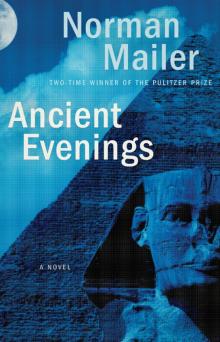 Ancient Evenings
Ancient Evenings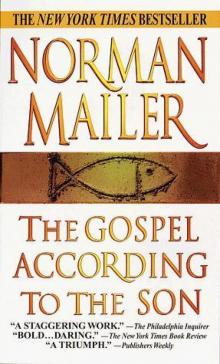 The Gospel According to the Son
The Gospel According to the Son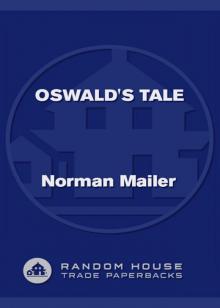 Oswald's Tale: An American Mystery
Oswald's Tale: An American Mystery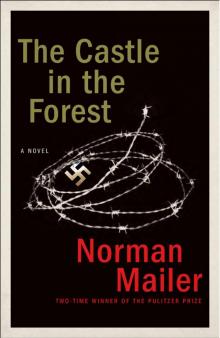 The Castle in the Forest
The Castle in the Forest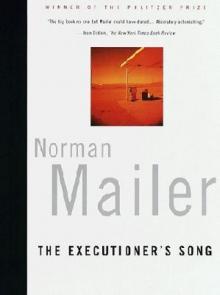 The Executioner's Song
The Executioner's Song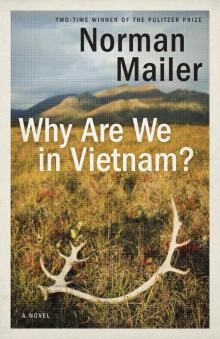 Why Are We in Vietnam?
Why Are We in Vietnam?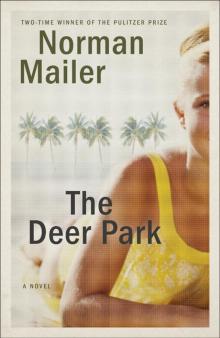 The Deer Park: A Play
The Deer Park: A Play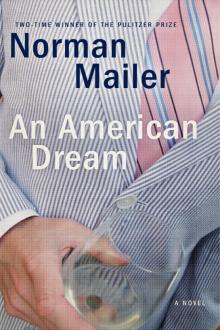 An American Dream
An American Dream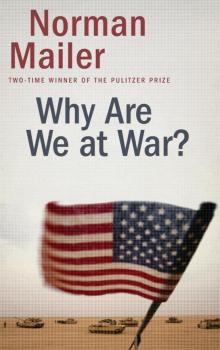 Why Are We at War?
Why Are We at War?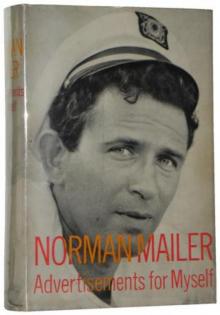 The Time of Her Time
The Time of Her Time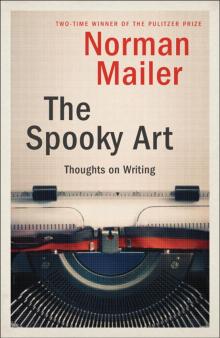 The Spooky Art: Thoughts on Writing
The Spooky Art: Thoughts on Writing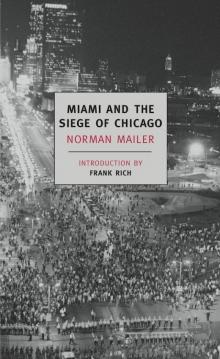 Miami and the Siege of Chicago
Miami and the Siege of Chicago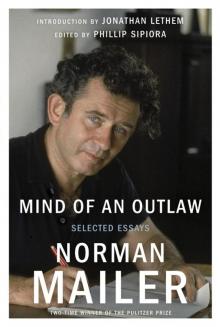 Mind of an Outlaw: Selected Essays
Mind of an Outlaw: Selected Essays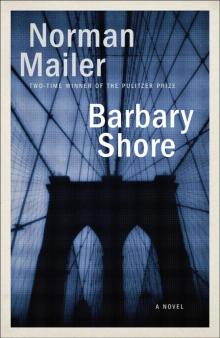 Barbary Shore
Barbary Shore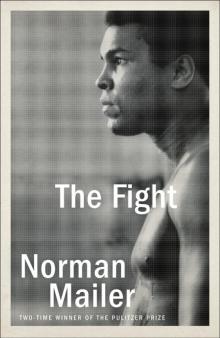 The Fight
The Fight Harlot's Ghost
Harlot's Ghost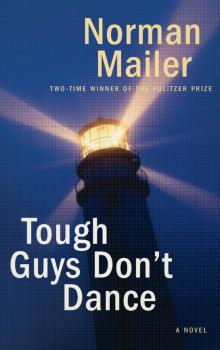 Tough Guys Don't Dance
Tough Guys Don't Dance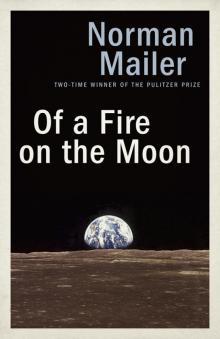 Of a Fire on the Moon
Of a Fire on the Moon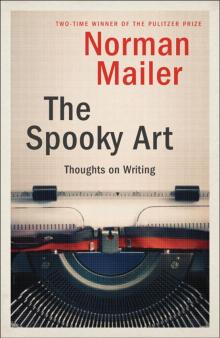 The Spooky Art
The Spooky Art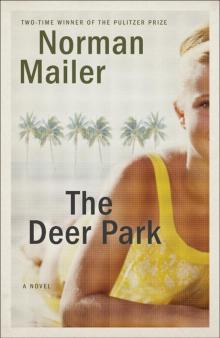 The Deer Park
The Deer Park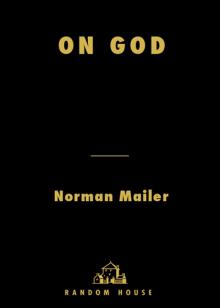 On God: An Uncommon Conversation
On God: An Uncommon Conversation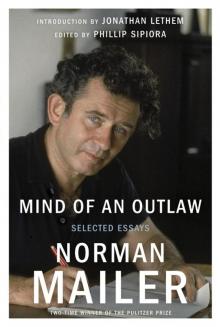 Mind of an Outlaw
Mind of an Outlaw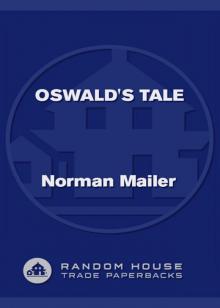 Oswald's Tale
Oswald's Tale